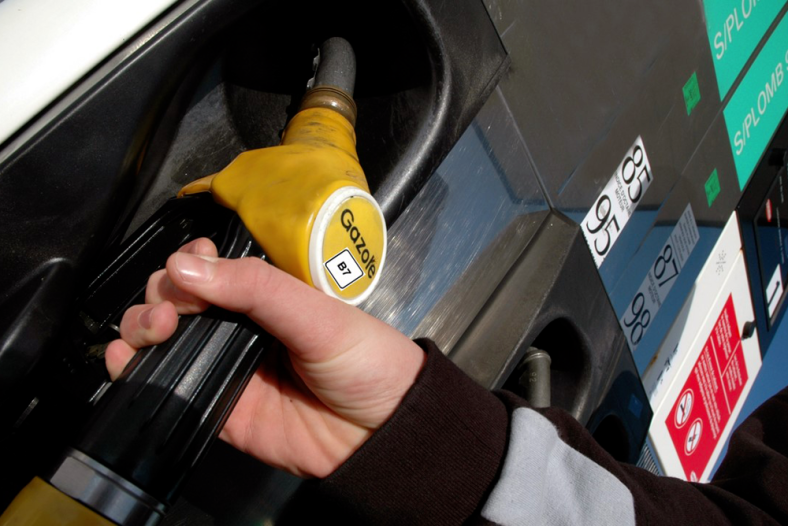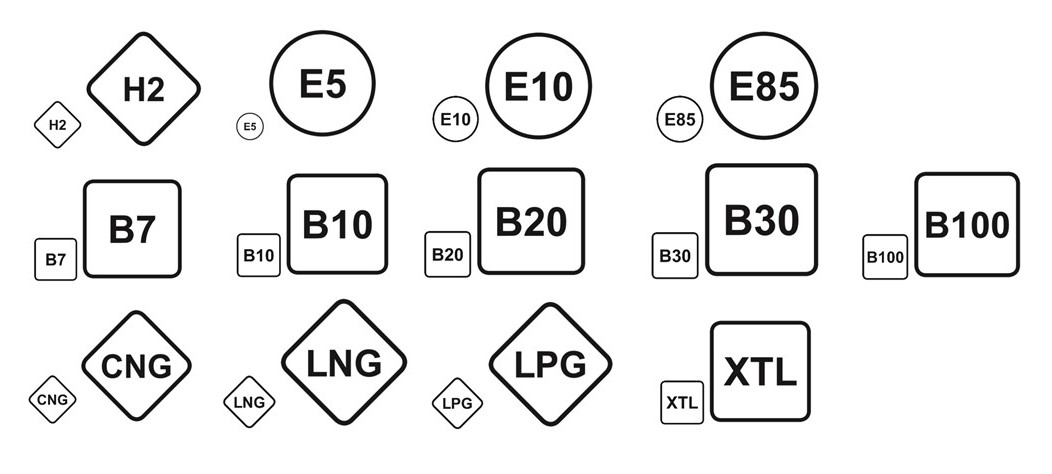New pictograms at your service stations

Ethanol, biodiesel, natural gas for vehicles, and soon hydrogen… Service stations are no longer content to sell petroleum-derived fuels. Whether in liquid, gaseous or even electric form, the alternative energies that are supposed to decarbonize the transport sector now have their place in the same way as SP95, SP98 or diesel. But with so many acronyms, colors and barbarically-named products, it was time to review the names of each fuel and represent each one with a graphic symbol identical throughout Europe. From Lisbon to Helsinki, motorists need to be sure they’re filling up with the right product! A voluntary European standard does the job: NF EN 16942, published in June 2017.
What does NF EN 16942 recommend?
It offers distributors a range of pictograms in a precise color code (black on white or silver background), font, shape, size and symbolism. For gasoline-type fuels, which inherit a circled pictogram, the symbol plays on the maximum ethanol content. Thus, SP95 and SP98, which in France contain 5% ethanol in standard blends, become E5; SP 95-E10 becomes E10. The logic goes on and on: E85 for flexfuel vehicles, and E100 one day. Some of these fuels have a symbol but are not marketed in France (e.g. B20), or are reserved for captive fleets outside the mass distribution network (e.g. B30, a diesel incorporating 30% plant ester-based biofuel).
 What does it change at service stations?
What does it change at service stations?
It completes and harmonizes the information given to motorists, whether they usually fill up in Spain, France or Sweden, or in an EU member state within the European Economic Area (Switzerland, Iceland, Norway, etc.). Please note: the standard applies to the graphic representation of the fuel, not to its composition. Technical specifications, test methods and approval procedures are covered in other standards. The proposed pictograms can coexist with existing names, trade names (e.g. Excelium) and color codes.
Another standard?
NF EN 16942 is not a mandatory standard. What pump operators have to do is provide clear, relevant and harmonized information to their customers. A 2014 European directive reiterates this, taking advantage of the arrival on the market of alternative, decarbonized fuels (biogas fuel, hydrogen, etc.) to “clean up” in terms of display. French regulations apply this obligation, setting a deadline of October 12, 2018. In the appendix, it has chosen to reproduce the graphics proposed in the standard, with precise dimensions for both the pump and the gun. The standard is thus presented as a ready-to-use “communication kit” for distributors subject to the standard. By this date, it will be easy for service stations that choose to use the signage recommended in the standard to comply with the regulations, even if they have to keep dual displays.
CEN/Cenelec